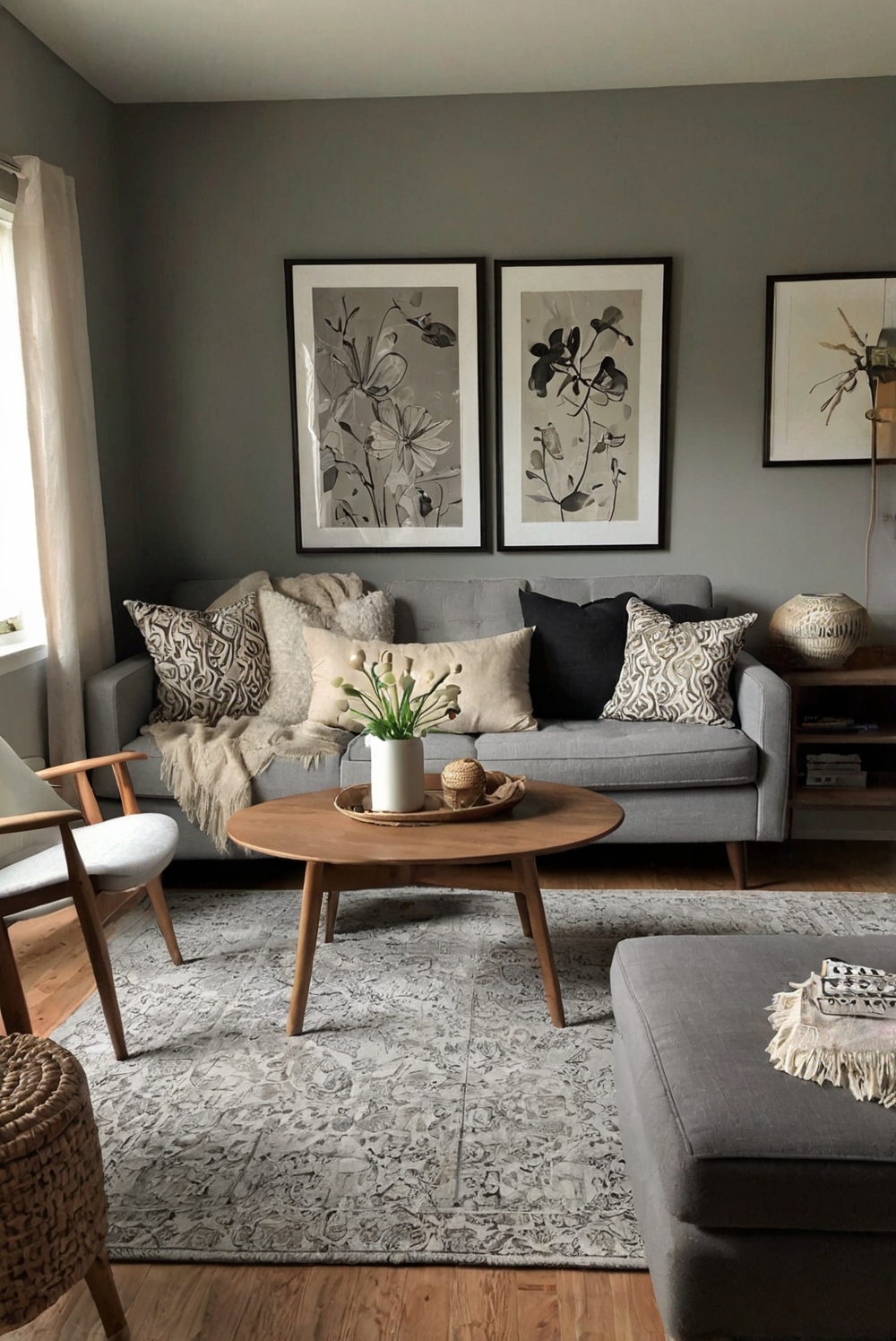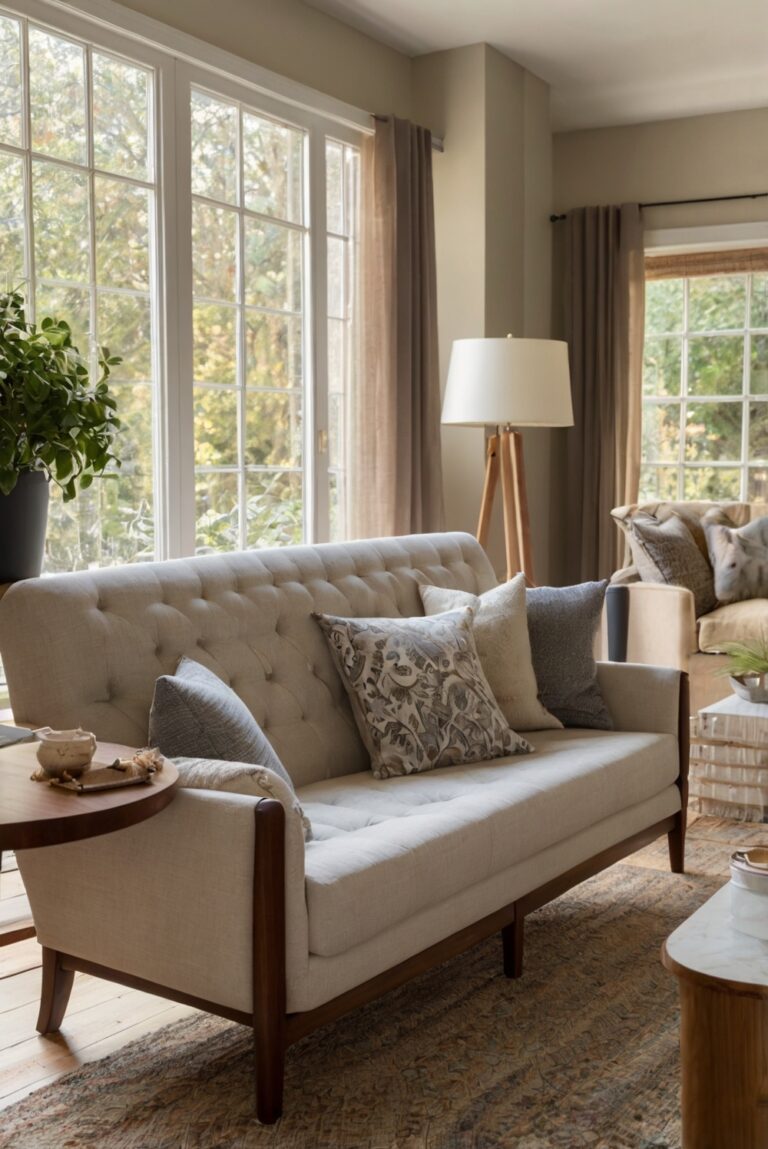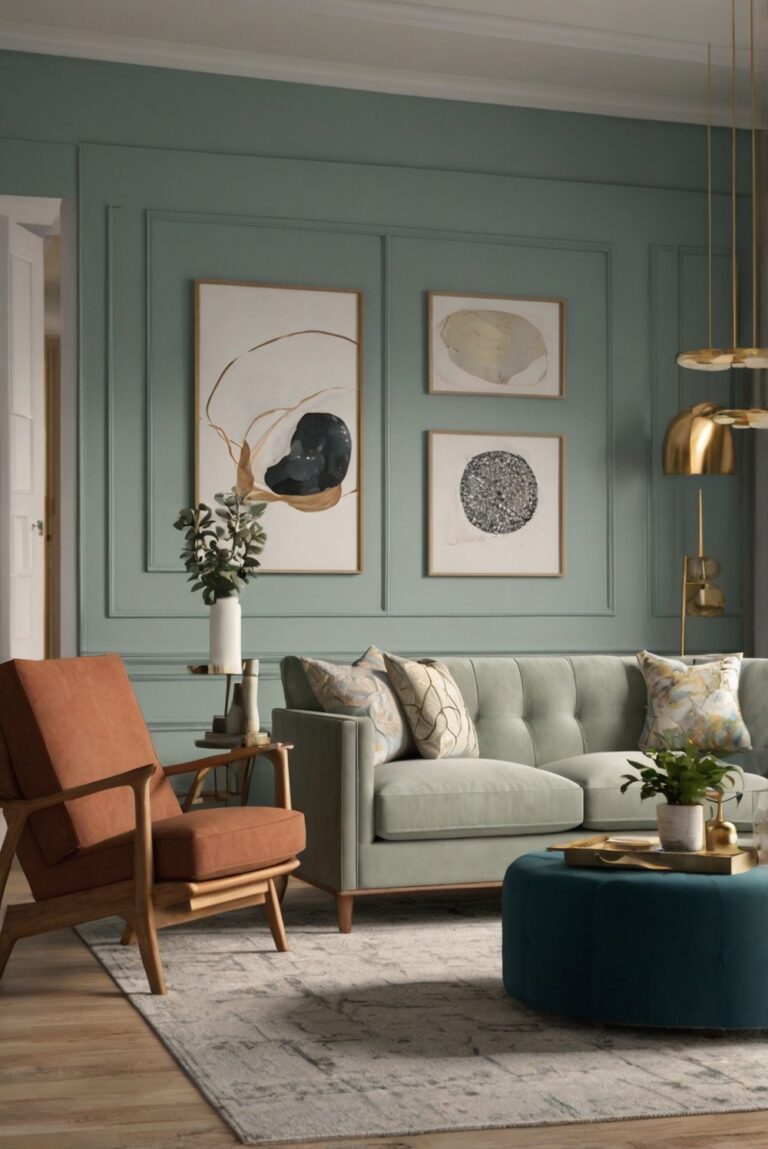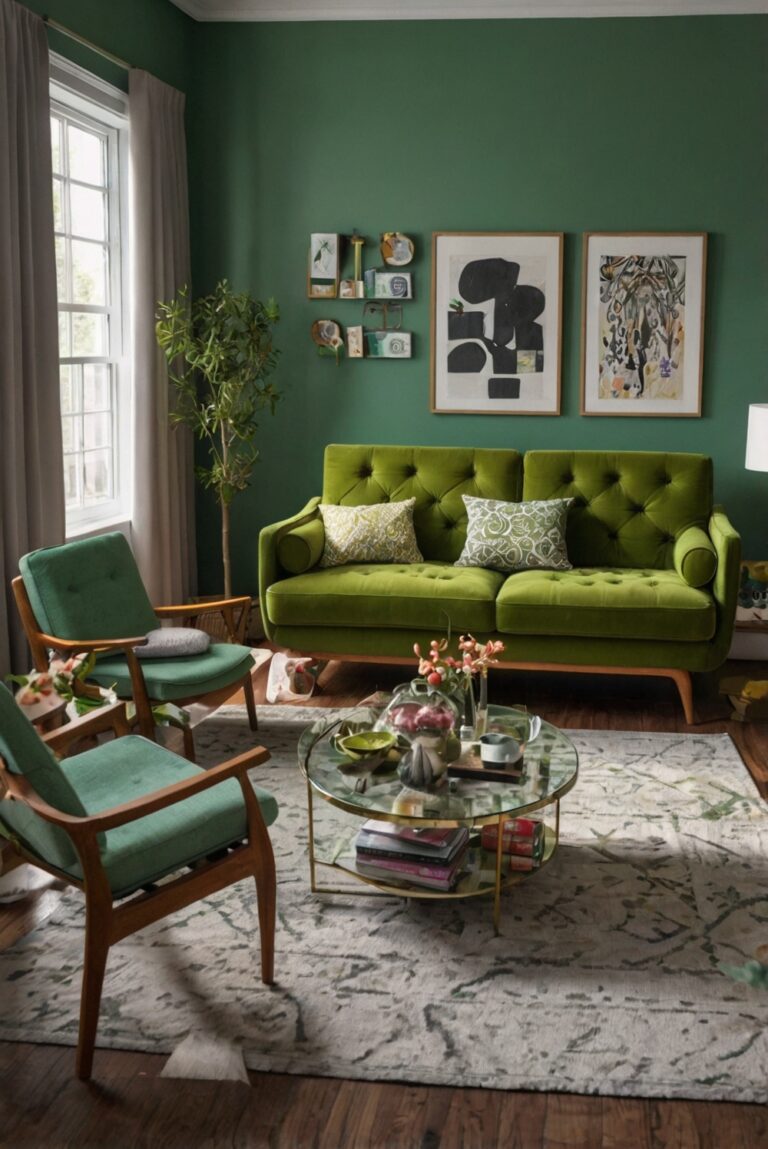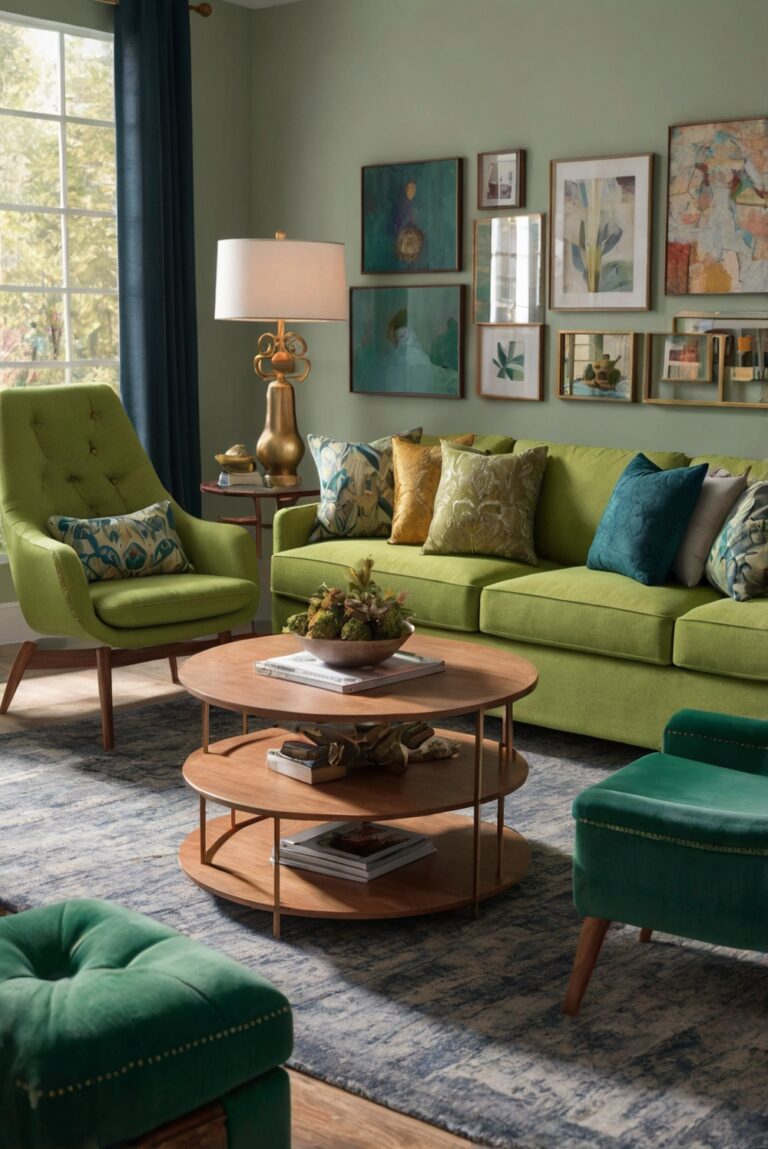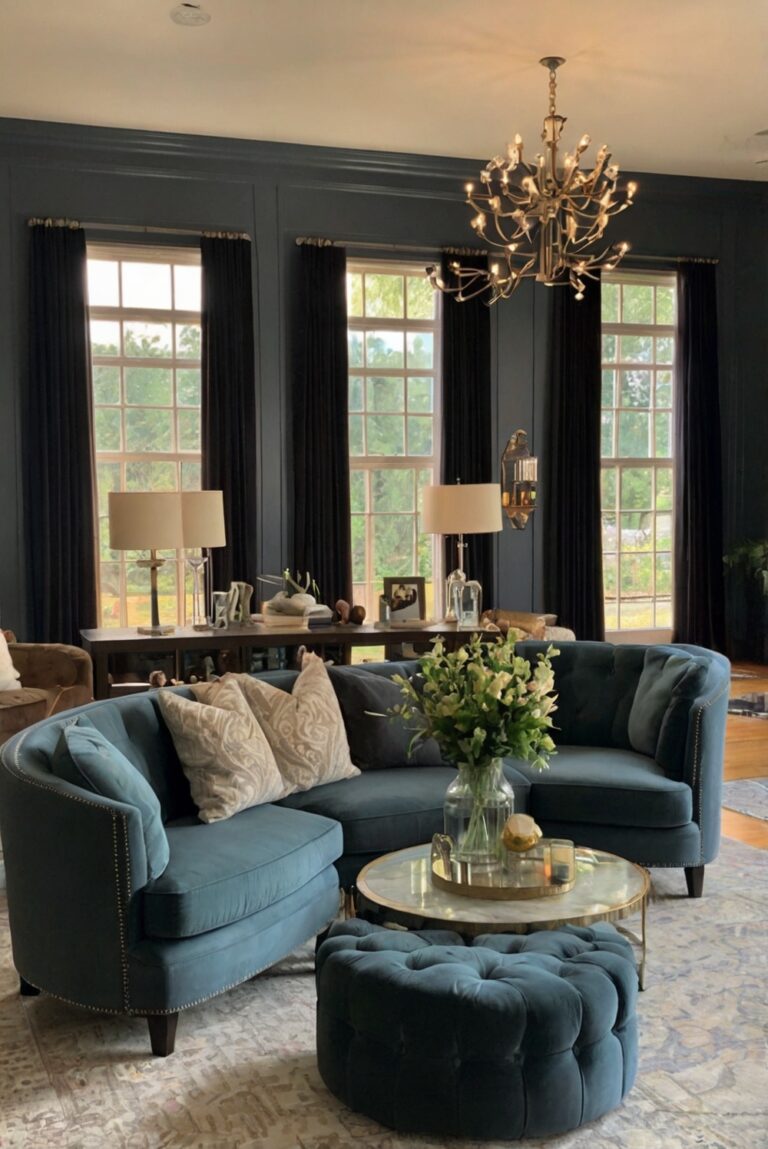Discover space-saving furniture ideas for small living rooms. Learn how to maximize your space with clever design solutions in this daily interior designer routine post.
Some space-saving furniture ideas for small living rooms include:
– Use multifunctional furniture such as sofa beds, storage ottomans, and wall-mounted desks.
– Opt for furniture with hidden storage compartments to minimize clutter.
– Choose lightweight and visually open furniture to create the illusion of more space.
– Utilize wall-mounted shelves and floating cabinets to free up floor space.
– Consider collapsible or stackable furniture for easy storage when not in use.
– Implement a cohesive color scheme and avoid bulky furniture to maintain a sense of openness.
– Use mirrors strategically to reflect light and make the room appear larger.
– Prioritize quality over quantity and carefully select pieces that truly enhance the room’s functionality and aesthetics.
By implementing these space-saving furniture ideas, you can maximize the functionality and visual appeal of your small living room while maintaining a sense of openness and organization in your home decor.
What are some space-saving furniture ideas for small living rooms?
When dealing with a small living room, it is crucial to maximize space efficiency through smart furniture choices. Here are some space-saving furniture ideas to consider:
Multipurpose Furniture:
Investing in multipurpose furniture is key to saving space in small living rooms. Look for items such as sofa beds, ottomans with storage, or coffee tables that can double as desks. These pieces serve dual functions, allowing you to make the most of limited space.
Wall-Mounted Shelves:
Utilizing wall-mounted shelves is a great way to free up floor space in a small living room. You can display books, decor items, or even create a mini home office area without taking up valuable square footage. Consider installing floating shelves for a sleek and modern look.
Foldable Furniture:
Foldable furniture, such as collapsible dining tables or chairs, is excellent for small living rooms. These pieces can be easily stored away when not in use, giving you more room to move around. Look for foldable options that are both functional and stylish.
Utilize Vertical Space:
When dealing with a small living room, it’s essential to think vertically. Consider tall bookcases, floor-to-ceiling storage units, or hanging planters to make use of vertical space. This not only provides extra storage but also draws the eye upward, creating the illusion of a larger room.
Opt for Furniture with Legs:
Choosing furniture with legs can create a sense of openness in a small living room. Sofas, chairs, and coffee tables with exposed legs allow light to pass through, making the space feel more airy and spacious. This design trick can help prevent the room from feeling cramped.
In conclusion, when it comes to small living rooms, strategic furniture choices can make all the difference. By incorporating multipurpose pieces, wall-mounted shelves, foldable furniture, utilizing vertical space, and opting for furniture with legs, you can maximize space efficiency and create a stylish and functional living area. Remember to prioritize functionality and aesthetics when selecting furniture for your small living room to achieve a balanced and inviting space.
1. How can I maximize space in a small living room?
To maximize space in a small living room, consider multipurpose furniture like a sofa bed or a coffee table with storage compartments. Wall-mounted shelves can also help free up floor space. Utilize vertical space by installing floating shelves or hanging plants. Opt for furniture with sleek designs and legs to create a sense of openness. Consider using light colors for walls and furniture to make the room feel more spacious. Lastly, declutter regularly to maintain a tidy and organized space.
2. What types of furniture are best for small living rooms?
For small living rooms, consider furniture that is multifunctional, such as a sleeper sofa, nesting tables, or ottomans with hidden storage. Choose furniture with slender profiles to avoid overcrowding the room. Wall-mounted shelves and foldable furniture like drop-leaf tables can also be great space-saving options. Look for pieces that can be easily moved or rearranged to accommodate different layouts.
3. How can I create the illusion of more space in a small living room?
To create the illusion of more space in a small living room, use mirrors strategically to reflect light and make the room feel larger. Opt for furniture with exposed legs to create a sense of openness. Keep the room clutter-free and organized to maintain a spacious feel. Choose furniture in light colors to brighten the space and make it appear larger. Consider using rugs to define different areas within the room while still maintaining an open feel.
4. What are some creative storage solutions for small living rooms?
Creative storage solutions for small living rooms include utilizing ottomans with hidden storage, incorporating wall-mounted shelves, and using baskets or bins to organize items. Consider using furniture with built-in storage compartments like coffee tables with drawers or beds with under-bed storage. Floating shelves can provide additional storage without taking up floor space. Maximize closet space by using organizers and dividers to keep items neatly stored and easily accessible.
5. How can I make a small living room feel cozy and inviting?
To make a small living room feel cozy and inviting, incorporate soft textiles like throw pillows, blankets, and rugs. Choose warm lighting options like floor lamps or string lights to create a comfortable ambiance. Arrange furniture in a way that encourages conversation and interaction. Add personal touches like artwork, photos, or plants to make the space feel homier. Consider using a bold accent wall or statement piece of furniture to add visual interest and personality to the room.

